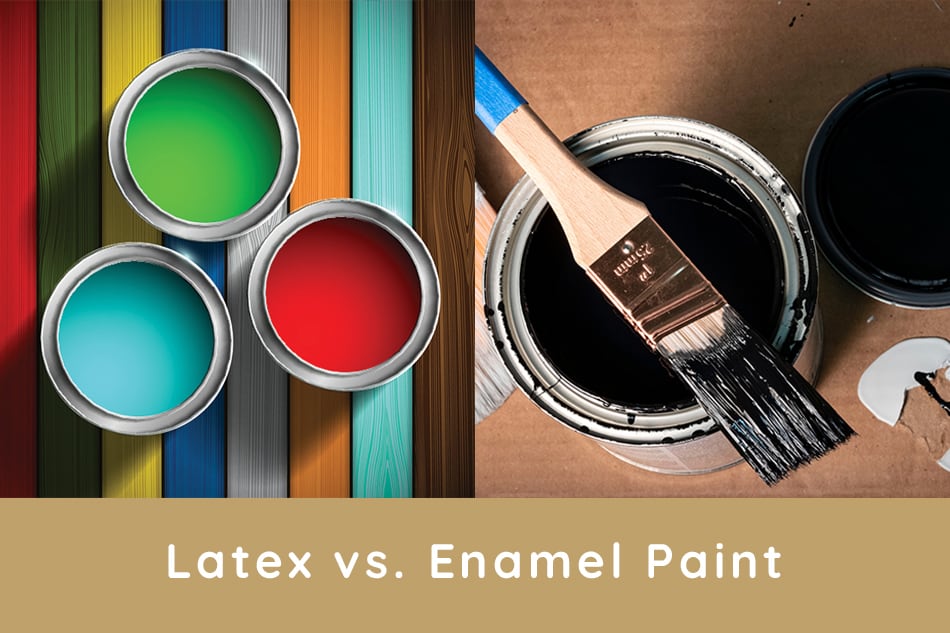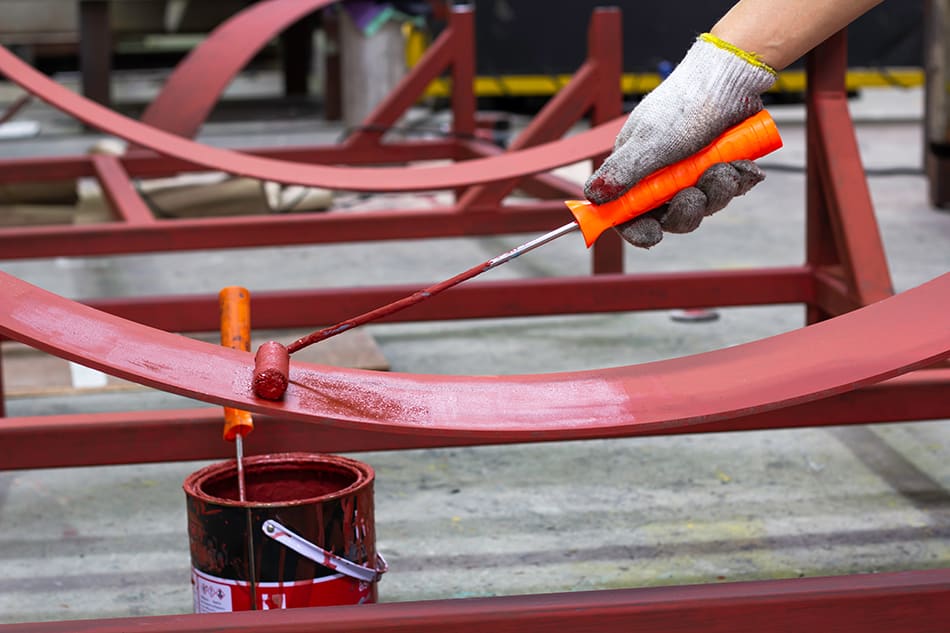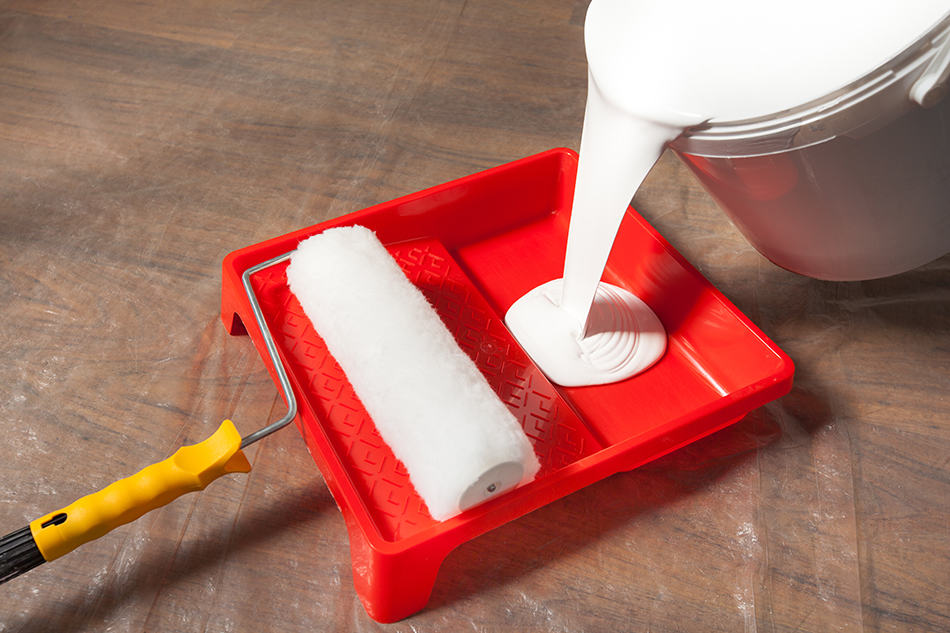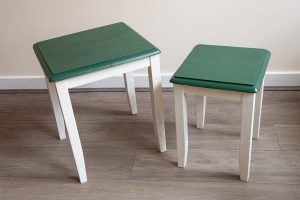For years, people use paint not only to make certain surfaces look more appealing. It can also protect a surface against wear and tear, making the surface durable and long-lasting. Unfortunately, there are various kinds of paint in the market, and buying the best product for your project can be a daunting task.
The good news is that we can help you pick the right one by comparing the two most popular paints in the market, which are enamel and latex paint.
So, what paint should you use? To give you a better view, here are the difference between the two popular paints. From there, you’ll be able to decide which product is best for your project.
Basic Terminologies
Enamel Paint
Enamel paint was first introduced in the 1800s. It was a time when paints were less reliable. Back then, labeling a product as “enamel paint” is a strong marketing move because it implies that the product is tough and water-resistant.
Keep in mind that enamel paint does not contain enamel. The term “enamel” refers to the quality of the finish after the paint has dried. To be specific, this type of paint delivers and smooth and glossy finish that can last for a long period.
In most cases, paint companies use the term “enamel” to label their high-end products because it makes the product sound durable and appealing.
Latex Paint
Latex paint does not contain the latex of a rubber plant. Instead, the term “latex” refers to the binder used in the paint, which is acrylic resin. Additionally, the word “latex” describes the paint’s properties, such as its level of malleability and versatility.
Most water-based paints are usually labeled as “latex paint.” They are commonly used by most painters because they produce less odor and dry faster. Plus, they provide excellent color retention.
The Difference Between Latex and Enamel Paint
Odor and Safety Difference
Enamel or oil-based paints are known for their strong and irritating odor. As such, you have to be careful when painting with this paint because it can cause headaches, dizziness, eye irritation, and breathing issues.
Water-based or latex paints are less toxic compared to enamel paints. Latex paint also has an odor; however, it is different and milder than the odor of enamel paints. Aside from that, this type of paint is a better option for the environment, and it can be recycled if unused.
When it comes to volatile organic compounds (VOC) contents, both types of paint contain VOCs. Remember, these compounds can travel into the air. From there, they can be converted into harmful gases, such as toluene, formaldehyde, benzene, and acetone. For this reason, it is best to opt for pain products, whether latex or enamel, that has low or zero VOC contents.
Aside from that, you should also make sure that the room is well ventilated before you start painting. As such, you need to open all windows and turn on a fan while you’re painting.
Additionally, you should also wear a mask and gloves to protect yourself from harmful chemicals. Also, paint fumes have negative effects on people, especially children and the elderly. For this reason, you have to keep people away from the room until the paint is fully dry.
Overall, latex paint is safer and less toxic than enamel paint. Still, both types of paint contain harmful compounds, so it is best to be cautious when using these products.
Drying Time and Quality Difference
Enamel paint has a long drying time; however, it delivers a top-notch finish once it is dry. Remember, having a long drying time is not a disadvantage because it is necessary so that the paint can produce a smooth and flawless coat that can last for a long period.
Compared to enamel paint, latex paint dries quickly. However, latex paint delivers a smooth, glossy, and flawless finish. In fact, a disadvantage of this type of paint is that it starts to peel off after a certain period, so you need to repaint the surface. As such, latex paint is not long-lasting.
In terms of quality, enamel paint has an edge over latex paint. However, you have to remember that you need to use the right paint for a certain surface. If your project requires a smooth and glossy finish, then you need to use enamel paint. On the other hand, if your project needs a colorful coat, you should use latex paint.
Ease of Use and Clean-Up
Enamel or oil-based paint is thick and hard to spread, so you need to use various kinds of brushes or rollers to spread it properly. Aside from that, you can only apply one coat at a time because of its long drying time. Also, enamel paint tends to have bubbles. As such, you should not shake or stir the paint before mixing to avoid this problem. Lastly, when using oil-based paint, a priming coat is necessary to prevent peeling.
Compared to enamel paint, latex paint is thinner. It also has a quick drying time, so you can apply it multiple times. Additionally, you don’t need to apply a priming coat. You can even use a paint sprayer to spread the paint all over a surface.
For clean-up, latex paint is easier to clean because you only need soap and water. As for enamel paint, you need to use a paint thinner to clean the brushes and remove the spilled paint.
In terms of ease of use, latex paint is the obvious winner. Unfortunately, you can’t use this paint for a wide range of surfaces. Still, it is great for large surfaces or walls. Remember, you can’t use enamel paint for a large or long surface because it will need tons of solvents for thinning, so it will consume a lot of your time and money.
Weather Conditions
Latex or water-based paints should not be applied on surfaces that are exposed to adverse weather conditions. The reason is that fluctuating temperatures can affect the drying time of the paint.
For example, low temperatures and humidity can extend the drying time of the paint, whereas high temperatures can hasten the drying process. If this happens, the quality and finish of the paint will be affected.
Enamel paints, on the other hand, are more tolerant to various weather conditions. As such, fluctuating temperatures will not have a great impact on their quality and finish.
Surface Conditions
As you know, the condition of the surface you’re going to paint is crucial. For instance, a surface with a little bit of moisture is fine if you’re going to apply latex paint. The moisture may cause the paint to slightly thin out, but it will also make the paint adhere to the surface.
As for enamel paints, it is best to apply them on a dry surface because oil-based paints can repel water. As such, the paint will not stick to a wet surface.
Which Paint Should You Use for Various Surfaces?
As mentioned, latex paint is best used on concrete walls. However, you can’t use this paint on metal surfaces. Keep in mind that latex paint is water-based. As such, coating a metal surface with latex paint will only lead to rust. Still, latex paint is the ideal choice of paint if you’re going to paint drywall, stucco, and plaster.
As for enamel paint, it is best suited for areas exposed to temperature fluctuations and adverse weather conditions. Additionally, it is best applied on various surfaces, including metal, wood, ceramic, glass, porcelain, aluminum, and stainless steel.
Plus, you can also use it for your bathroom, kitchen, trims, doors, and window frames. The reason is that enamel paint can protect these surfaces and make them durable.
Aside from that, enamel paint is also used for decorations and artistic jobs. The reason is not only due to the smooth and glossy finish. Enamel paint doesn’t leave brush marks, so your output will look flawless and attractive.
Finally, if you want a light color, then enamel paint is your best choice. Remember, latex paint requires about two or three coats to get the best result, leading to a darker color.
The Final Verdict
As presented, enamel paint is a clear winner because of its quality and many uses. However, there are surfaces where latex paint is best suited, like concrete. Aside from that, latex paint is also less toxic and easy to clean. Plus, latex paints are now being developed, making them more resistant to wear and tear. For these reasons, the battle between latex and enamel paint has no winner.
Remember, both paints have their pros and cons. So, you have to know which paint is suited for your project. By using the right paint, you’ll also be able to save a lot of money and time.








